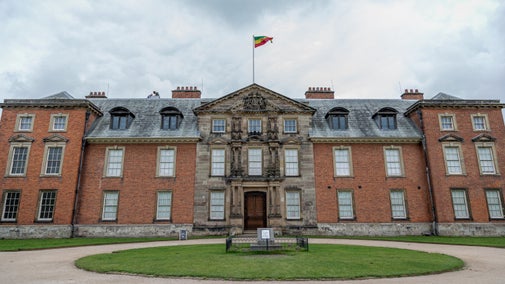
Immerse yourself in history
Meet people from the centuries gone by, learn about the unique artworks in our care and understand more about historic traditions.

Uncover the fascinating stories and lasting legacies of the people who helped shape the places we care for.

Discover the places and collections we care for that have connections to Black histories. Learn more about the people behind these connections, including the lady of the house at Dyrham Park in South Gloucestershire and an exiled emperor at Dunham Massey in Greater Manchester.

Some of the places and collections we care for reveal stories from and connections to South Asian history, reflecting the UK's diverse heritage and cultural links to South Asia. Learn more about the people and pieces behind these connections from princesses to a and peacock dress.

Learn more about the LGBTQ+ people with connections to the places we care for and why highlighting these stories is so important.

Many of the places and collections we care for tell the stories of disabled people throughout history. Learn more about the people behind these connections.

Learn about remarkable women in history linked to the places in our care, from the political player who helped make Charles II king to the archaeologist who helped discover a 7th-century Saxon ship burial.

Two ordinary houses in suburban Liverpool saw the birth of a revolution in music and identity that would shape a generation.

Discover how Beatrix Potter’s Victorian upbringing and fascination with animals culminated in a successful career as an author and illustrator and a passion for conservation.

Discover more about the extraordinary life of Sir Winston Churchill in this permanent exhibition at Chartwell, including five must-see items from the curator.

Throughout history women artists have had many obstacles to overcome in order to pursue careers in the fine arts. Discover great women artists and their artworks in the National Trust collections.

Thomas Hardy’s vividly imagined Wessex has enchanted readers of his novels for decades. Discover how the author brought the fictional county to life.

Learn how William Morris, founder of the Arts and Crafts movement, brought the natural world indoors with his wallpapers and textiles, which are still instantly recognisable today.

Agatha Christie spent time at Greenway for holidays and for time to relax as a family. Find out how she came to purchase the property and how it became requisitioned during the Second World War.

Find out about the life of Benjamin Disraeli, including his journey from charismatic young politician to twice-serving Prime Minister and his move to Hughenden Manor in Buckinghamshire.

From the first woman MP to sit in Parliament to the rural retreat of a wartime prime minister and the Liverpool terraces that changed music for ever, discover the places in our care where people made history.

Many of the places we care for were home to impassioned people who campaigned both for and against women’s suffrage. Find out about these campaigners, from Laura McLaren and George Bernard Shaw in favour, to Lord Curzon who was against it.

Learn about George Villiers, 2nd Duke of Buckingham, a powerful courtier and politician during the reign of Charles II.

One of three founders of the National Trust, Octavia Hill is among the greatest social entrepreneurs in British history and the impact of her life and work is still felt today.

As well as a founder of the National Trust, Hardwicke Rawnsley was a religious man, writer, social reformer and active campaigner for the protection of the Lake District.

Find out about the work of Robert Hunter and how his job as a solicitor helped shape the National Trust.

Meet people from the centuries gone by, learn about the unique artworks in our care and understand more about historic traditions.